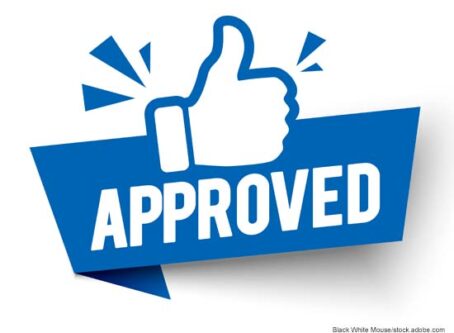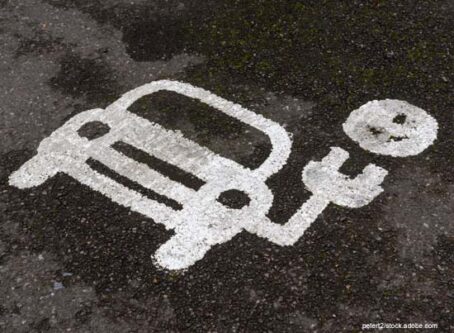Toll increase should be ‘last option,’ says New York state official
The debate is heating up over a proposed systemwide toll increase in the state of New York.
In November, the New York State Thruway Authority proposed a rate hike for all users starting in 2024. The proposal included an increase of 5% for in-state E-ZPass users, with an additional increase of 5% coming in 2027. Drivers without E-ZPass – or with one from another state – would see an increase of 75%. Tolls in the state are currently frozen through 2023.
On Dec. 5, the authority’s board of directors authorized the first step in the public toll adjustment process. Now, the agency will host public hearings and consider public comments prior to the board holding a final vote on the proposal later this year. The authority says they expect to begin public hearings on the matter in the spring.
The Thruway Authority says it needs to increase tolls in order to fund repairs to an aging infrastructure. According to the agency, 75% of the 815 bridges on the Thruway are more than 60 years old. Currently, 85 bridges have been identified for replacement over the next decade, with a projected cost of $800 million.
In the days following the proposal, several state officials spoke out about the suggested increase, calling it “outrageous” and accusing the Thruway Authority of being “out-of-touch with the times we are living in”.
State Comptroller Thomas DiNapoli recently issued a report regarding the possible rate increase in which his office “reviewed a decade of the Thruway’s finances and the toll hike proposal and found gaps in essential information necessary to evaluate the proposal.”
In the report, DiNapoli lists a number of financial concerns – including a decline in traffic and toll revenues from the COVID-19 pandemic and the expensive construction of the Cuomo Bridge – and said the Thruway Authority needed to first improve its operations and maximize non-toll revenues before considering a rate increase.
“The authority’s toll increase proposal comes at a time of extraordinary challenges for New York residents, businesses and visitors, who have faced rapidly rising costs for everything from food to housing to fuel. In addition, the pandemic placed extraordinary pressures on commercial trucking, which generates a disproportionately large share of toll revenues relative to their share of traffic,” the report read.
“As always, but especially in this economic environment, the Thruway must make every effort to operate at maximum efficiency, maintain and improve system infrastructure, and provide a quality user experience. It also must make it clear that it has exhausted all opportunities to minimize toll rates.”
DiNapoli’s report concludes that prior to increasing rates for all Thruway users, the authority should:
- Resolve systemwide cashless tolling and Toll By Mail issues.
- Perform a comprehensive assessment of operating needs and expenses to identify costs that may no longer be necessary.
- Maximize non-toll revenue sources, including federal funding as well as revenue streams that could be generated from its assets and infrastructure,e such as service areas and gasoline stations, special permits, and other property.
- Disclose capital needs assessment to justify cost projections.
“The Thruway should be more transparent with the public and disclose critical information, and identify and put in place all possible cost-savings and alternative revenue actions to minimize costs to drivers,” DiNapoli said in a statement. “Raising tolls should be the last option, and the Thruway has more work to do.”
In response to the report, the Thruway Authority told CNY Central News they have made several improvements to its billing system, including “enhancements to the Tolls by Mail website, newly designed toll bills, and envelopes to emphasize ways to avoid fees and to help customers better understand the tolls incurred, and more signage leading up to and after cashless tolling gantries.”
The agency added that the Office of the Comptroller never reached out to them for any of the information in DiNapoli’s report and said they comply with all statutory legal obligations regarding reporting requirements for the needs and conditions of the roadway.
The Thruway Authority has stated multiple times they are not supported by any federal, state or local taxpayer funding, and that tolls account for around 90% of its total revenue. Furthermore, the agency says that even with an overall toll increase, their rates would still remain among the lowest in the nation.
Despite the concerns of DiNapoli and others, Frank Hoare, interim executive director of the Thruway Authority, said that without a toll increase the agency will soon find itself in a dire financial situation.
During a transportation budget hearing on Feb. 6, Hoare said that projections show the Thruway Authority will face a $4 million budget deficit beginning in 2024 if tolls remained the same, with that number rising to $250 million by 2031 without a toll increase.
According to Hoare, the biggest cause of the deficit is the rising costs associated with repairing the Thruway’s infrastructure. He says that within the last two years equipment and vehicle costs have increased by 40%. Along with higher costs for supplies such as steel, asphalt and gravel, Hoare says that the cost for personnel has also significantly increased.
“There is never a good time to raise prices. I know that,” Hoare said. “But if you look at prices and you look at expenses and what the needs were in 2010 versus now, it’s gone up. If we want to maintain a safe and reliable system… we are going to need to continue to invest in that.”
These rising costs are of concern not only for the projects already planned by the Thruway Authority but for future ones as well. The agency says that with an average age of 55 years, hundreds of other bridges will soon be identified for replacement, bringing a projected price tag of $6 billion to $7 billion. Hoare says that’s an amount the current toll rate couldn’t support.
“We are at a point where we cannot continue to push the can down the road,” he said. LL









